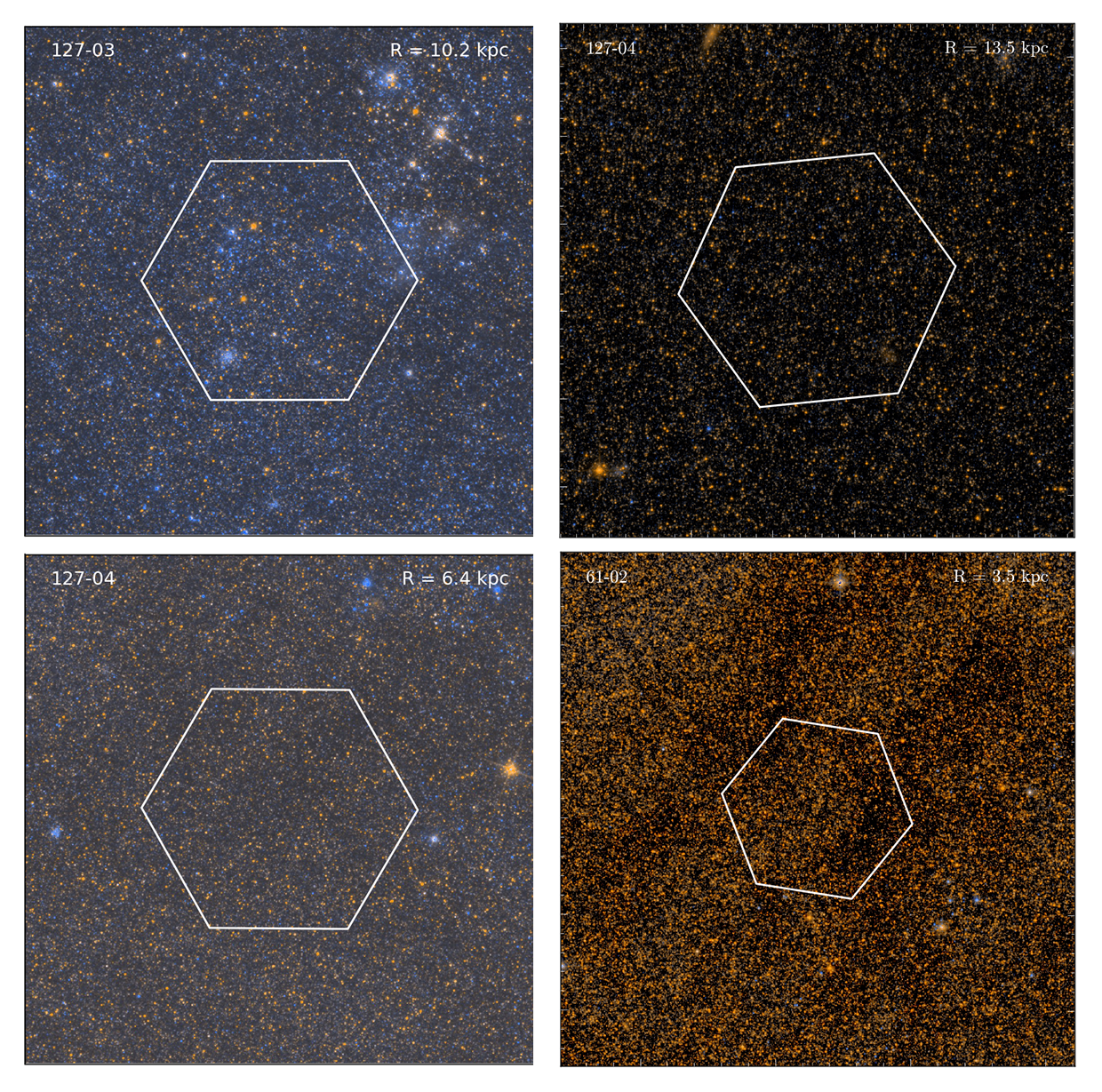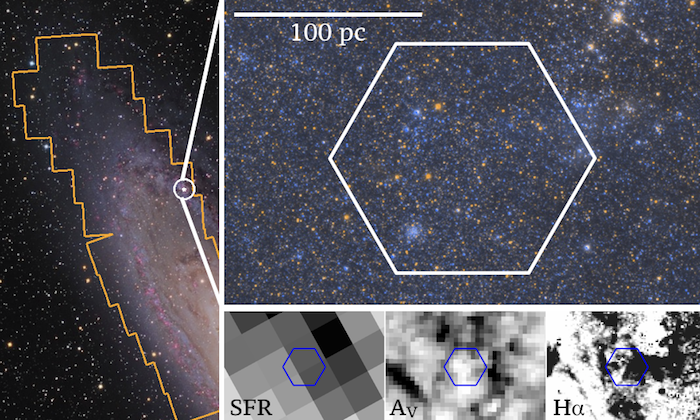M31
Contact

| Julianne Dalcanton |
|---|
| University of Washington |
Summary
This program targets regions in M31 where the underlying physical properties are well-constrained from resolved stellar population analyses with the Hubble Space Telescope. Observations include 18 regions (~50-100 pc in size) with a wide range of local properties, including recent star formation, dust content, and metallicity.
Finding Targets
An object whose MANGA_TARGET3 or MNGTARG3 value includes one or more of the bitmasks in the following table was targeted for spectroscopy as part of this ancillary target program. See SDSS bitmasks to learn how to use these values to identify objects in this ancillary target program.
| Program (bit name) | Bit number | Target Description |
|---|---|---|
| M31 | 21 | M31 targets |
Description
The observations consist of two plates: Plate 9677, where IFUs target inner regions (radii less than ~10kpc) with high surface brightness, and Plate 9678, where IFUs target lower surface brightness regions in the outer disk. The 18 total “science” IFU observations include regions with varying ancient and recent star formation history (SFH), dust column, dust geometry, and metallicity. IFUs also targeted HII regions, regions with variable stellar density, and regions with complimentary HST narrow band observations. Sky fibers were used to target star clusters.
The scientific purpose of these observations is to assess the ability of of SED fitting codes to recover key astrophysical quantities from integrated light, using the tight constraints on physical properties provided by the Panchromatic Hubble Andromeda Treasury (PHAT; Dalcanton et al., 2012).
The large angular extent of M31 necessitated numerous changes to the observing strategy and to the MaNGA DRP. We were able to repurpose the DRP modifications designed for the Coma cluster program (Gu et al. 2018) for the data reduction of the M31 plates. The M31 observations should not be used in standard analyses of the MaNGA sample.

References
Dalcanton et al., 2012, ApJS, 200, 18
Gu et al., 2018, ApJ, 859, 37


